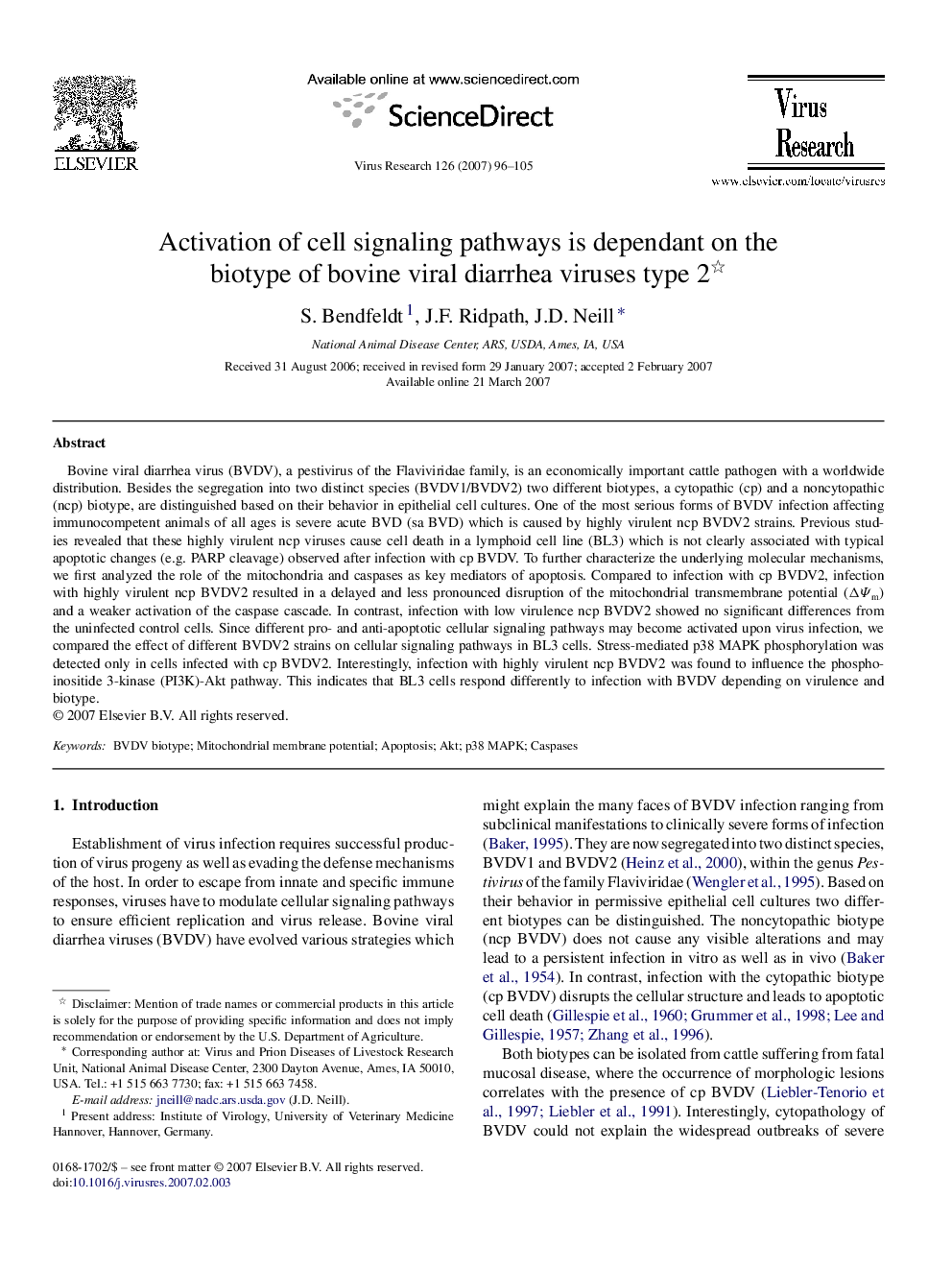| Article ID | Journal | Published Year | Pages | File Type |
|---|---|---|---|---|
| 3430900 | Virus Research | 2007 | 10 Pages |
Bovine viral diarrhea virus (BVDV), a pestivirus of the Flaviviridae family, is an economically important cattle pathogen with a worldwide distribution. Besides the segregation into two distinct species (BVDV1/BVDV2) two different biotypes, a cytopathic (cp) and a noncytopathic (ncp) biotype, are distinguished based on their behavior in epithelial cell cultures. One of the most serious forms of BVDV infection affecting immunocompetent animals of all ages is severe acute BVD (sa BVD) which is caused by highly virulent ncp BVDV2 strains. Previous studies revealed that these highly virulent ncp viruses cause cell death in a lymphoid cell line (BL3) which is not clearly associated with typical apoptotic changes (e.g. PARP cleavage) observed after infection with cp BVDV. To further characterize the underlying molecular mechanisms, we first analyzed the role of the mitochondria and caspases as key mediators of apoptosis. Compared to infection with cp BVDV2, infection with highly virulent ncp BVDV2 resulted in a delayed and less pronounced disruption of the mitochondrial transmembrane potential (ΔΨm) and a weaker activation of the caspase cascade. In contrast, infection with low virulence ncp BVDV2 showed no significant differences from the uninfected control cells. Since different pro- and anti-apoptotic cellular signaling pathways may become activated upon virus infection, we compared the effect of different BVDV2 strains on cellular signaling pathways in BL3 cells. Stress-mediated p38 MAPK phosphorylation was detected only in cells infected with cp BVDV2. Interestingly, infection with highly virulent ncp BVDV2 was found to influence the phosphoinositide 3-kinase (PI3K)-Akt pathway. This indicates that BL3 cells respond differently to infection with BVDV depending on virulence and biotype.
